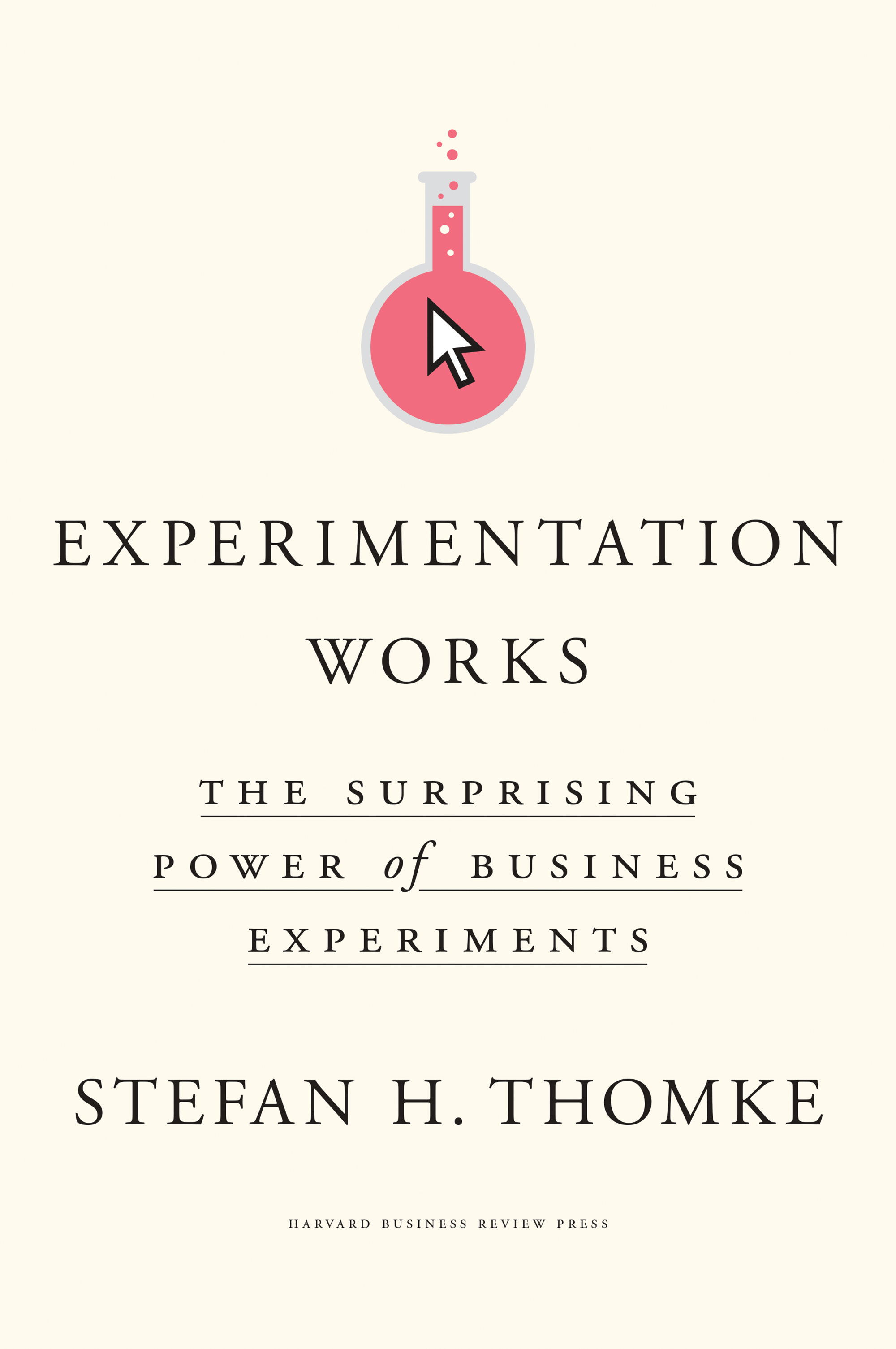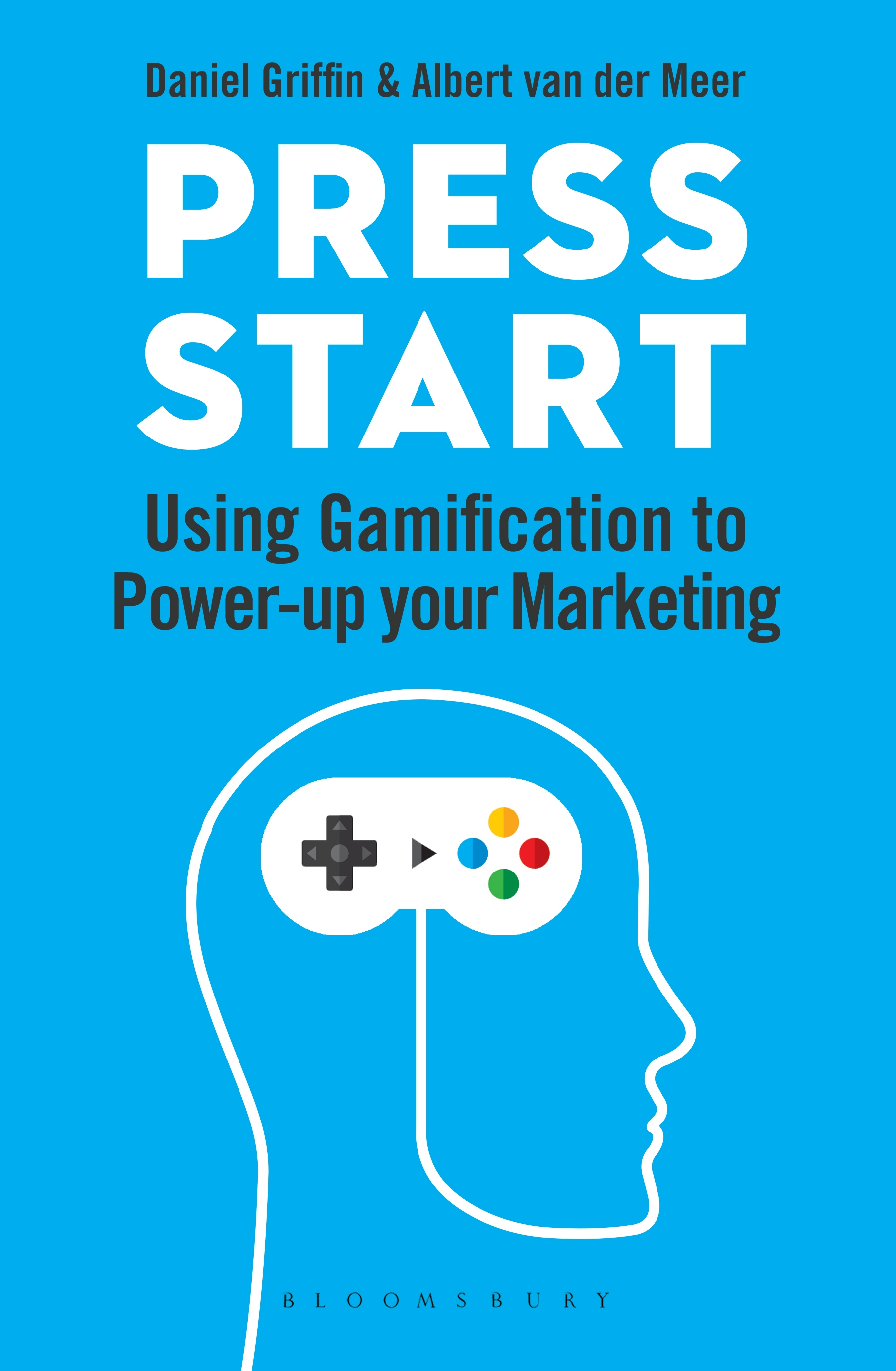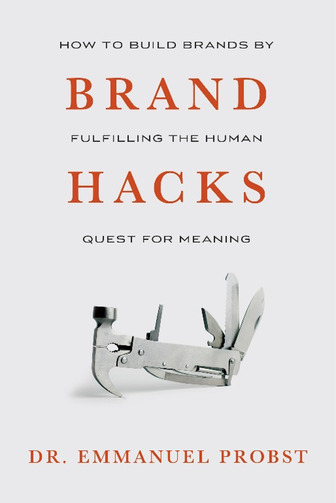Experimentation Works – The Surprising Power of Business Experiments
 The average marketing research project has a lot of similarities to an experiment. Both involve hypotheses, data collection, analysis of the results and implications and actions based on the findings. So it’s perhaps understandable that a new book on business experimentation holds some potential relevance to marketing researchers.
The average marketing research project has a lot of similarities to an experiment. Both involve hypotheses, data collection, analysis of the results and implications and actions based on the findings. So it’s perhaps understandable that a new book on business experimentation holds some potential relevance to marketing researchers.
While author and Harvard Business School professor Stefan H. Thomke hardly mentions research in Experimentation Works, his wide-ranging examination of what it means to be (and how to achieve the status of) an experiment-driven company gives readers a solid philosophical foundation for assessing their own organizations’ current status as believers in experimentation and its close cousin marketing research.
Much like becoming customer-focused or marketing research-driven, it requires support from the C suite and an internal valuing of the learning that can come from trying and failing. So much of business is about avoiding failure at all costs but, as the book so persuasively argues, there is value in embracing the lessons and wisdom that can come from our swings and misses.
Readers who are not in digital-based firms may find less to work with here, as many of the experimentation examples he cites are from firms like Booking.com or Amazon for whom round after round of A/B testing is easy to do. If you’re a CPG firm, for example, you can’t exactly put out flop after flop after flop and assume you’ll still be employed long enough to learn from the failures.
One of the best ideas, and most potentially applicable for researchers, is his discussion of collecting and maintaining experimentation scrapheaps, which preserve, as much as possible, tested hypotheses, iterations and resulting decisions. Taking a cue from the idea that you can glean more from your failures than from your successes, perhaps a storehouse or record of past research projects that didn’t work can inform new endeavors, to avoid making the same mistakes again or nudge current projects in new directions in the face of evidence that past approaches were unsuccessful.
The strongest chapters include one on what makes a good business experiment, as there are corollaries to conducting marketing research and questions to ask (Do we understand cause and effect? Are experiments really driving our decisions?) and the chapter on large-scale experimentation, which features a discussion of seven attributes that experiment-driven internal business cultures need. The attributes, including things like a learning mind-set, intellectual humility and integrity, are also applicable to researchers.
Overall, the book is an easy, informative read, laden with real-world examples and mercifully free of b-school jargon, and it offers a convincing argument for the value of being willing to fail.
Press Start – Using Gamification to Power-up Your Marketing
 Given that gamification has cooled off considerably as a buzz-generating topic, it’s surprising to see a new book devoted exclusively to it but Press Start does a thorough job of educating the reader on why it still matters as a tool for engaging consumers.
Given that gamification has cooled off considerably as a buzz-generating topic, it’s surprising to see a new book devoted exclusively to it but Press Start does a thorough job of educating the reader on why it still matters as a tool for engaging consumers.
Authors Daniel Griffin and Albert van den Meer acknowledge having been swept up in gamification mania starting in 2012 and argue that, rather than fading from importance, gamification’s seeming disappearance from buzzword hotlists is more down to the fact that a lot of its elements have been absorbed into a range of business practices – that and the fact that many of the early and subsequent attempts at gamification were surficial and poorly conceived, focusing more on the game-related aspects without a deeper consideration of the emotional and psychological factors required for gamification to be most effective.
Thus the authors spend the bulk of the book on a deep dive into the theories and underpinnings of those factors, with disparate touchstones like Maslow’s hierarchy of needs and Lord of the Rings. They make what could be a dry academic exercise into something that’s actually fun and stimulating. Particularly convincing are the latter chapters on constructing your ideal gamification framework, for which they use the analogy of a tower, one that you build so that your player customers achieve the most satisfying outcome – emotionally satisfying for them and financially satisfying for your business or organization.
Brand Hacks
How to Build Brands by Fulfilling the Human Quest for Meaning
 Brands have hard jobs these days. Used to be, a brand could just stand for getting your clothes clean or quenching your thirst but now efficacy is almost an afterthought unless a brand engenders some kind of emotional response among its users that earns a deep and abiding loyalty.
Brands have hard jobs these days. Used to be, a brand could just stand for getting your clothes clean or quenching your thirst but now efficacy is almost an afterthought unless a brand engenders some kind of emotional response among its users that earns a deep and abiding loyalty.
That’s a tall order and one that author Emmanuel Probst acknowledges early in Brand Hacks. It’s especially difficult given the age we live in, where ads and other marketing messages are everywhere and consumers are either frequently unaware of them (due to tuning out the noise) or actively trying to avoid them (through ad blockers, etc.).
The book consists of three main sections – the quest for personal meaning, social meaning and cultural meaning – and each one contains chapters that explore current examples of companies and brands who have succeeded (and, at times, failed) in “connecting with consumers on an emotional level and supporting their quest for meaning,” as he puts it.
While that all sounds a bit fuzzy, Probst keeps things very practical, offering short brand-hack sections that offer advice on how brands can harness selfies or implement nostalgia, for example, along with helpful summations of key takeaways at the end of each chapter.
A veritable time capsule of current social and business trends – from authenticity and buying/eating local to side hustles and mindfulness – the book is well-researched and wide-ranging, citing examples from televangelists to electronic dance music festivals, and offers plainspoken, clear-eyed advice that feels like it’s coming from a well-informed colleague rather than an expert lecturing from on high, with no unrealistic expectations for what marketing and advertising can achieve.
If Brand Hacks occasionally feels overly broad, it’s likely because the goal of forming emotional bonds with the people who use a company’s products or services is so situation-dependent. Each brand is different, as are its consumers, so there can logically be no single, magic solution to help achieve authenticity or earn a place in the public’s heart.
A longtime researcher, Probst repeatedly stresses the need for readers to move out from behind their desks and be with consumers – beyond just surveying or interviewing them – through ethnography and other forms of immersive research. Getting up close and personal is the best way to help you discover which brand-related feelings might mean the most or be of the most value to your consumers and drive your efforts to associate your company to those feelings for them.
